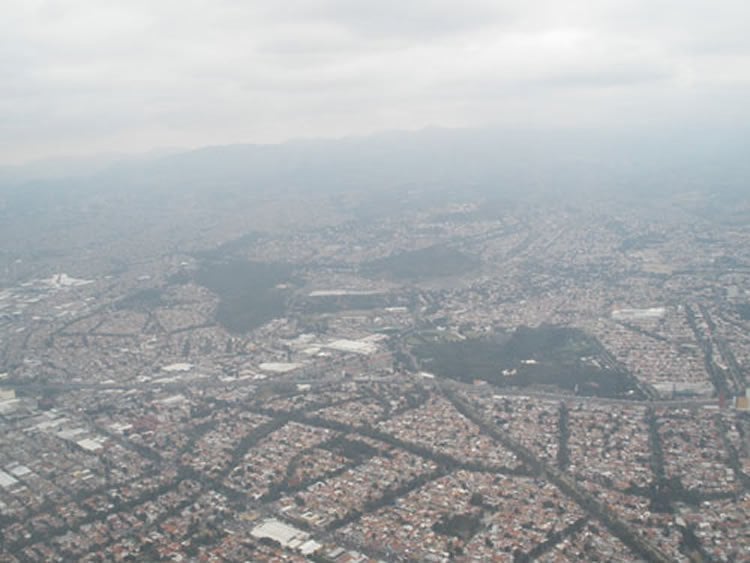Summary: A new study adds to growing evidence that early exposure to pollution can increase both suicide risks in younger people and Alzheimer’s disease as people age.
Source: University of Montana.
A University of Montana researcher and her collaborators have published a new study that reveals increased risks for Alzheimer’s and suicide among children and young adults living in polluted megacities.
Dr. Lilian Calderón-Garcidueñas said her group studied 203 autopsies of Mexico City residents ranging in age from 11 months to 40 years. Metropolitan Mexico City is home to 24 million people exposed daily to concentrations of fine particulate matter and ozone above U.S. Environmental Protection Agency standards. The researchers tracked two abnormal proteins that indicate development of Alzheimer’s, and they detected the early stages of the disease in babies less than a year old.
“Alzheimer’s disease hallmarks start in childhood in polluted environments, and we must implement effective preventative measures early,” said Calderón-Garcidueñas, a physician and Ph.D. toxicologist in UM’s Department of Biomedical and Pharmaceutical Sciences. “It is useless to take reactive actions decades later.”
The research was published in the Journal of Environmental Research.
The scientists found heightened levels of the two abnormal proteins – hyperphosphorylated tau and beta amyloid – in the brains of young urbanites with lifetime exposures to fine-particulate-matter pollution (PM2.5). They also tracked Apolipoprotein E (APOE 4), a well-known genetic risk factor for Alzheimer’s, as well as lifetime cumulative exposure to unhealthy levels of PM2.5 – particles which are at least 30 times smaller than the diameter of a human hair and frequently cause the haze over urban areas.
Findings indicate Alzheimer’s starts in early childhood, and the disease progression relates to age, APOE 4 status and particulate exposure. Researchers found hallmarks of the disease among 99.5 percent of the subjects they examined in Mexico City. In addition, APOE 4 carriers have a higher risk of rapid progression of Alzheimer’s and 4.92 higher odds of committing suicide versus APOE 3 carriers, controlling for age and particulate exposure.

Overall, the authors have documented an accelerated and early disease process for Alzheimer’s in highly exposed Mexico City residents. They believe the detrimental effects are caused by tiny pollution particles that enter the brain through the nose, lungs and gastrointestinal tract, and these particles damage all barriers and travel everywhere in the body through the circulatory system.
The authors conclude that ambient air pollution is a key modifiable risk for millions of people across the globe, including millions of Americans who are exposed to harmful particulate pollution levels.
“Neuroprotection measures ought to start very early, including the prenatal period and childhood,” Calderón-Garcidueñas said. “Defining pediatric environmental, nutritional, metabolic and genetic risk-factor interactions are key to preventing Alzheimer’s disease.”
Her research partners in the study are from the Universidad del Valle de México, the Instituto Nacional de Pediatría, Boise State University, Lake Erie College of Osteopathic Medicine, the National Autonomous University of Mexico, Médica Sur and the Universidad Autónoma de Piedras Negras. The work was conducted without grant funding.
Source: University of Montana
Publisher: Organized by NeuroscienceNews.com.
Image Source: NeuroscienceNews.com image is credited to Lilian Calderón-Garcidueñas.
Original Research: Abstract for “Hallmarks of Alzheimer disease are evolving relentlessly in Metropolitan Mexico City infants, children and young adults. APOE4 carriers have higher suicide risk and higher odds of reaching NFT stage V at ≤ 40 years of age” by Lilian Calderón-Garcidueñas, Angélica Gónzalez-Maciel, Rafael Reynoso-Robles, Ricardo Delgado-Chávez, Partha S. Mukherjee, Randy J. Kulesza, Ricardo Torres-Jardón, José Ávila-Ramírez, and Rodolfo Villarreal-Ríos in Journal of Environmental Research. Published March 26 2018.
doi:10.1016/j.envres.2018.03.023
[cbtabs][cbtab title=”MLA”]University of Montana “Evidence Mounts for Increased Alzheimer’s and Suicide Risks in Polluted Cities.” NeuroscienceNews. NeuroscienceNews, 14 April 2018.
<https://neurosciencenews.com/suicide-alzheimers-pollution-8785/>.[/cbtab][cbtab title=”APA”]University of Montana (2018, April 14). Evidence Mounts for Increased Alzheimer’s and Suicide Risks in Polluted Cities. NeuroscienceNews. Retrieved April 14, 2018 from https://neurosciencenews.com/suicide-alzheimers-pollution-8785/[/cbtab][cbtab title=”Chicago”]University of Montana “Evidence Mounts for Increased Alzheimer’s and Suicide Risks in Polluted Cities.” https://neurosciencenews.com/suicide-alzheimers-pollution-8785/ (accessed April 14, 2018).[/cbtab][/cbtabs]
Abstract
Hallmarks of Alzheimer disease are evolving relentlessly in Metropolitan Mexico City infants, children and young adults. APOE4 carriers have higher suicide risk and higher odds of reaching NFT stage V at ≤ 40 years of age
Exposures to fine particulate matter (PM2.5) and ozone (O3) above USEPA standards are associated with Alzheimer’s disease (AD) risk. Metropolitan Mexico City (MMC) residents have life time exposures to PM2.5and O3above USEPA standards. We investigated AD intra and extracellular protein aggregates and ultrastructural neurovascular pathology in 203 MMC residents age 25.36 ± 9.23 y. Immunohistochemical methods were used to identify AT8 hyperphosphorilated tau (Htau) and 4G8 (amyloid β 17-24). Primary outcomes: staging of Htau and amyloid, per decade and cumulative PM2.5(CPM2.5) above standard. Apolipoprotein E allele 4 (APOE4), age and cause of death were secondary outcomes. Subcortical pretangle stage b was identified in an 11month old baby. Cortical tau pre-tangles, neurofibrillary tangles (NFT) Stages I-II, amyloid phases 1-2, Htau in substantia nigrae, auditory, oculomotor, trigeminal and autonomic systems were identified by the 2nd decade. Progression to NFT stages III-V was present in 24.8% of 30-40 y old subjects. APOE4 carriers have 4.92 times higher suicide odds (p = 0.0006), and 23.6 times higher odds of NFT V (p < 0.0001) v APOE4 non-carriers having similar CPM2.5exposure and age. Age (p = 0.0062) and CPM2.5(p = 0.0178) were significant for developing NFT V. Combustion-derived nanoparticles were associated with early and progressive damage to the neurovascular unit. Alzheimer's disease starting in the brainstem of young children and affecting 99.5% of young urbanites is a serious health crisis. Air pollution control should be prioritised. Childhood relentless Htau makes a fundamental target for neuroprotective interventions and the first two decades are critical. We recommend the concept of preclinical AD be revised and emphasize the need to define paediatric environmental, nutritional, metabolic and genetic risk factor interactions of paramount importance to prevent AD. AD evolving from childhood is threating the wellbeing of our children and future generations.






